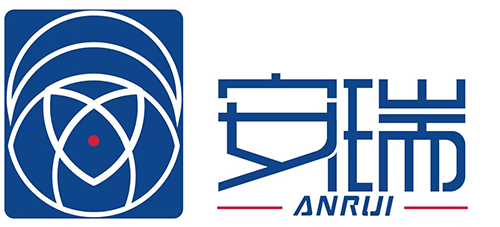Jul 23,2025
Understanding the Manufacturing Process of Polyurethane Palm-Coated Gloves: A Comprehensive Guide
Understanding the Manufacturing Process of Polyurethane Palm-Coated Gloves
Table of Contents
Introduction to Polyurethane Palm-Coated Gloves
The Importance of Gloves in Various Industries
Materials Used in Polyurethane Palm-Coated Gloves
Step-by-Step Manufacturing Process
Stage 1: Design and Prototyping
Stage 2: Material Preparation
Sta
Understanding the Manufacturing Process of Polyurethane Palm-Coated Gloves
Table of Contents
- Introduction to Polyurethane Palm-Coated Gloves
- The Importance of Gloves in Various Industries
- Materials Used in Polyurethane Palm-Coated Gloves
- Step-by-Step Manufacturing Process
- Stage 1: Design and Prototyping
- Stage 2: Material Preparation
- Stage 3: Coating Process
- Stage 4: Curing and Drying
- Stage 5: Quality Control and Testing
- Advantages of Polyurethane Palm-Coated Gloves
- Applications in Different Industries
- Maintenance and Care for Longevity
- Frequently Asked Questions
- Conclusion
Introduction to Polyurethane Palm-Coated Gloves
Polyurethane palm-coated gloves are a crucial part of personal protective equipment (PPE), designed to provide enhanced grip, dexterity, and protection against various hazards. These gloves are particularly favored in environments that demand both flexibility and durability. With the rising need for safety in industrial, agricultural, and medical settings, understanding the manufacturing process of these gloves becomes essential.
The Importance of Gloves in Various Industries
Gloves serve as a barrier between the user’s hands and potential hazards. In countless industries, including construction, manufacturing, and healthcare, workers rely on gloves to protect against cuts, abrasions, chemicals, and other injuries. The unique properties of polyurethane palm-coated gloves, such as their excellent abrasion resistance and grip, make them indispensable in these fields.
Materials Used in Polyurethane Palm-Coated Gloves
The manufacturing of polyurethane palm-coated gloves involves several materials that contribute to their performance. Understanding these materials is key to appreciating the gloves’ functionality.
Base Materials
Typically, these gloves are constructed from a blend of synthetic and natural fibers. Common base materials include:
- **Nylon**: Lightweight and offers excellent stretch and comfort.
- **Polyester**: Known for its durability and resistance to shrinking.
- **Cotton**: Provides comfort and breathability.
Coating Material
The palm coating is made from polyurethane, a versatile polymer that enhances grip and durability. Polyurethane coatings can be formulated to provide different levels of resistance, depending on the intended use of the gloves.
Step-by-Step Manufacturing Process
The manufacturing of polyurethane palm-coated gloves involves several stages, each critical to the final product’s quality and performance.
Stage 1: Design and Prototyping
The process begins with design and prototyping, where manufacturers create glove specifications based on intended use and industry requirements. Computer-aided design (CAD) software is often used to visualize and refine glove designs, ensuring optimal fit and functionality.
Stage 2: Material Preparation
Once the design is finalized, the selected materials are prepared. This involves cutting the fabrics into the appropriate shapes according to the glove design. The precise cutting ensures minimal waste and accurate fitting.
Stage 3: Coating Process
In this crucial stage, the glove’s palm is coated with polyurethane. The coating process can be accomplished using various methods, including dipping, spraying, or rolling the polyurethane onto the base material. Each method affects the thickness and texture of the coating, which in turn influences the glove’s grip and durability.
Stage 4: Curing and Drying
After the coating, the gloves undergo a curing process, where they are heated to allow the polyurethane to bond effectively with the fabric. This step is vital to ensure the coating adheres well and provides the desired performance characteristics. Following curing, the gloves are dried to remove any excess moisture.
Stage 5: Quality Control and Testing
Quality control is a critical phase in the manufacturing process. Finished gloves are subjected to various tests to assess their strength, durability, and protective capabilities. Common tests include abrasion resistance, grip tests, and flexibility assessments. Only those gloves that meet stringent quality standards are approved for distribution.
Advantages of Polyurethane Palm-Coated Gloves
Polyurethane palm-coated gloves offer numerous benefits that make them a popular choice across various industries:
- **Enhanced Grip**: The polyurethane coating provides an excellent grip, even in wet or oily conditions.
- **Durability**: These gloves are designed to withstand wear and tear, making them long-lasting.
- **Comfort**: With a breathable fabric base, they offer comfort during extended wear.
- **Flexibility**: The gloves allow for a high degree of flexibility, which is crucial for tasks requiring dexterity.
- **Chemical Resistance**: Depending on the formulation, these gloves can offer resistance to certain chemicals, adding an extra layer of protection.
Applications in Different Industries
Polyurethane palm-coated gloves are versatile and find applications in various sectors:
Construction and Manufacturing
In these fields, workers often face sharp objects and hazardous materials. The gloves provide the necessary protection while allowing for the dexterity required to handle tools and equipment safely.
Agriculture
Farm workers use these gloves for planting, harvesting, and handling chemicals. The gloves protect against cuts and chemical exposure, ensuring safety during labor-intensive tasks.
Healthcare
In medical settings, these gloves are used for tasks requiring both protection and sensitivity. They offer a barrier against pathogens while allowing healthcare professionals to perform delicate procedures.
Automotive
In the automotive industry, workers often deal with oils and chemicals. Polyurethane palm-coated gloves provide the grip needed for handling tools and components while protecting against harmful substances.
Maintenance and Care for Longevity
To maximize the lifespan of polyurethane palm-coated gloves, proper care and maintenance are essential. Here are some tips:
- **Regular Cleaning**: Clean the gloves according to the manufacturer’s instructions. Most can be washed with mild soap and water, but avoid harsh chemicals that can degrade the coating.
- **Proper Storage**: Store gloves in a cool, dry place away from direct sunlight to prevent degradation of materials.
- **Inspect Regularly**: Regularly check for any signs of wear or damage. Replace gloves that show significant signs of wear to maintain safety standards.
Frequently Asked Questions
What are polyurethane palm-coated gloves used for?
Polyurethane palm-coated gloves are used in various industries, including construction, manufacturing, healthcare, and agriculture, providing protection and enhanced grip.
Are polyurethane palm-coated gloves waterproof?
While they offer some water resistance, they are not completely waterproof. For tasks that involve prolonged exposure to water, specialized waterproof gloves should be used.
How should I clean polyurethane palm-coated gloves?
Most polyurethane palm-coated gloves can be cleaned with mild soap and water. Always follow the manufacturer’s cleaning instructions to avoid damaging the gloves.
Can I use these gloves for handling chemicals?
Polyurethane palm-coated gloves offer some level of chemical resistance, but it's essential to check the specifications for the specific chemical you will be handling.
How do I choose the right size of gloves?
To select the correct size, measure the circumference of your hand and refer to the manufacturer’s sizing chart. A proper fit ensures comfort and protection.
Conclusion
The manufacturing process of polyurethane palm-coated gloves is a meticulous journey that combines innovative design, quality materials, and rigorous testing to produce high-performance protective gear. Understanding this process not only highlights the importance of these gloves in various industries but also underscores the significance of quality in ensuring worker safety. As demand for reliable PPE continues to grow, polyurethane palm-coated gloves stand out as a leading choice for safeguarding hands against a multitude of hazards.
Polyurethane palm-coated labor protection gloves










